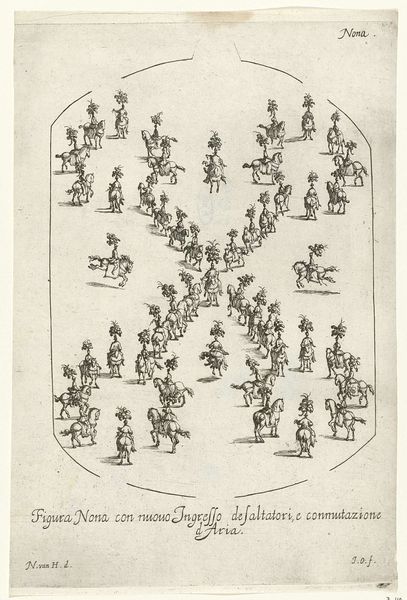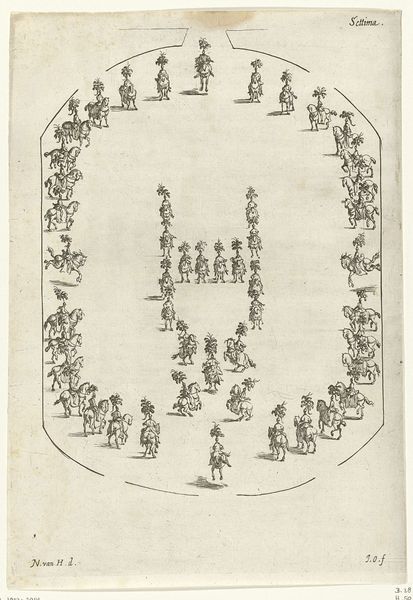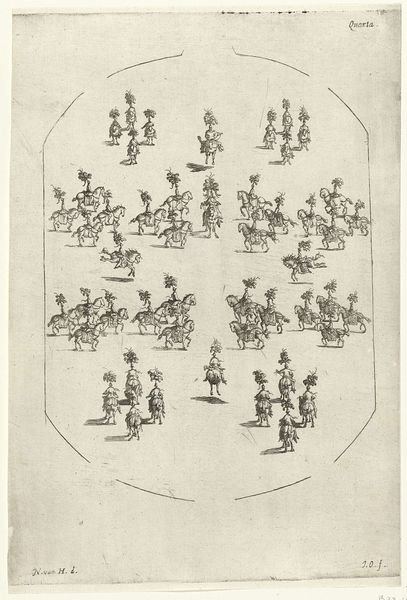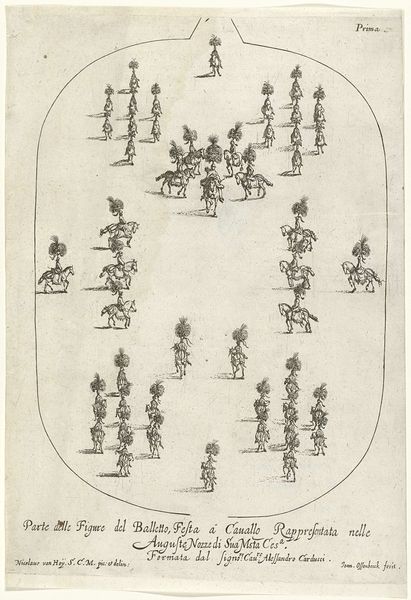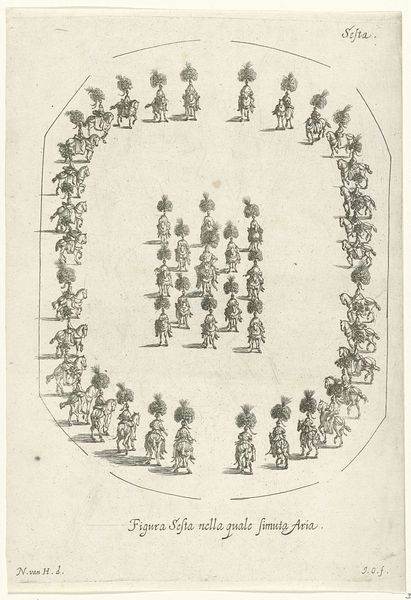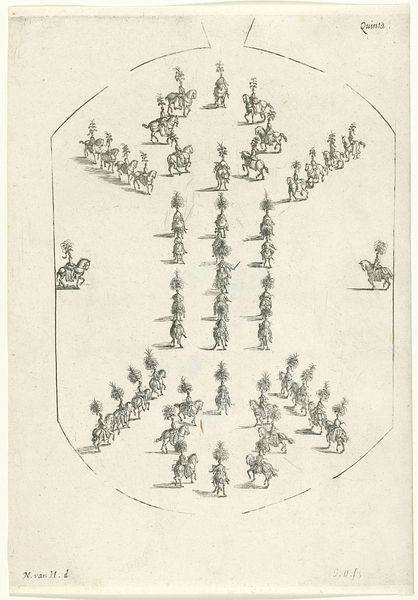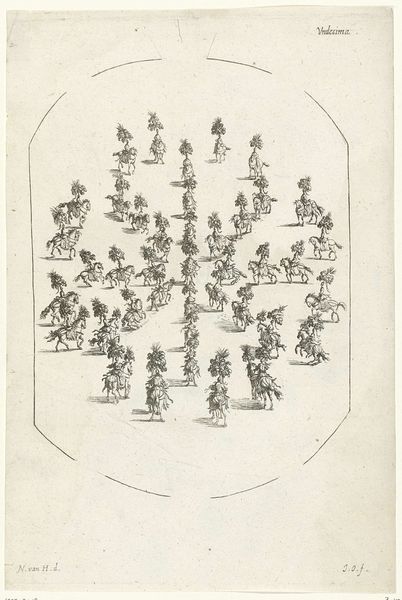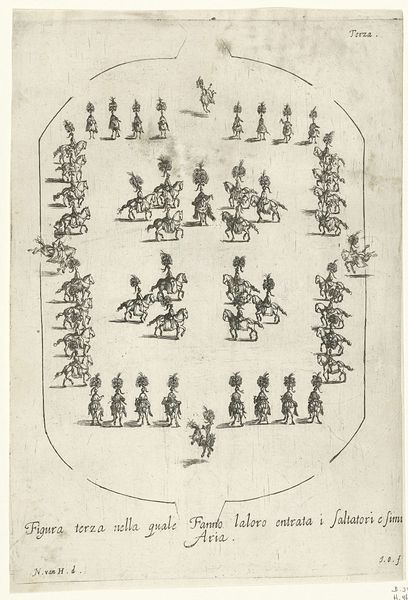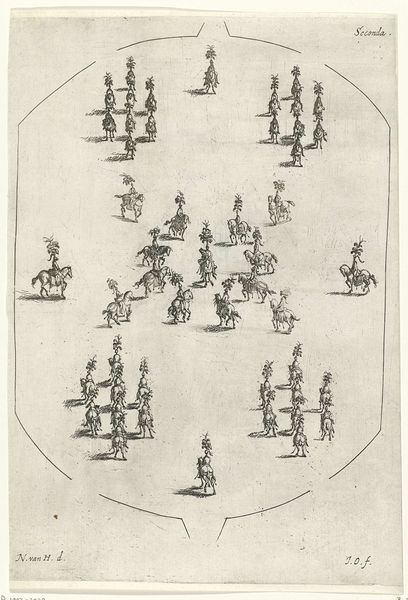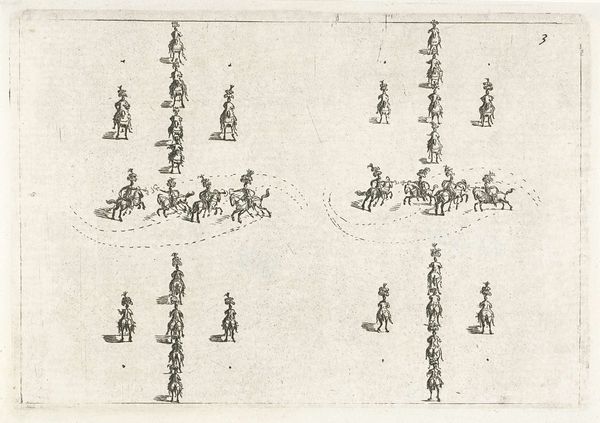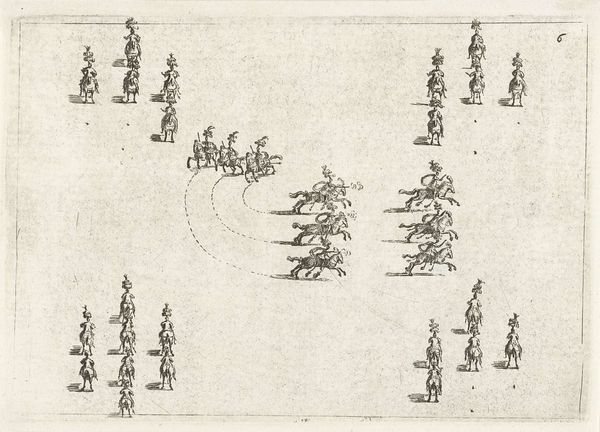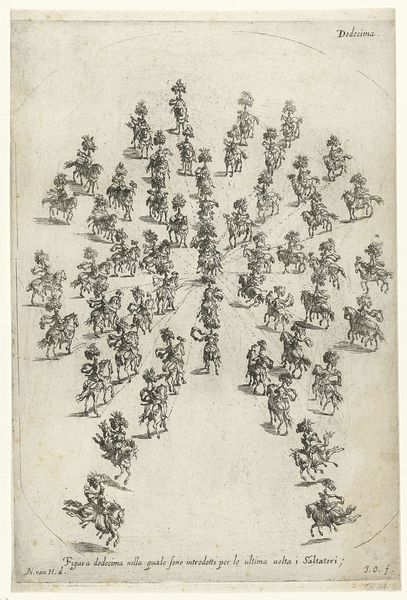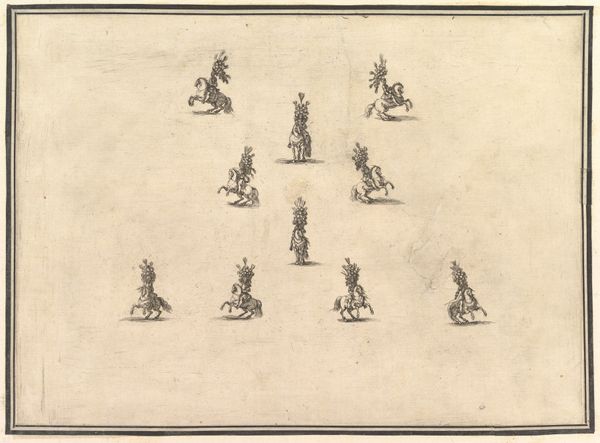
drawing, ink, engraving
#
drawing
#
dutch-golden-age
#
pen sketch
#
ink
#
geometric
#
line
#
genre-painting
#
engraving
Dimensions: height 290 mm, width 195 mm
Copyright: Rijks Museum: Open Domain
Curator: I’m drawn to the whimsical formality of this engraving, "Ruiterformaties (Ottava)," or "Rider Formations," rendered in 1667 by Jan van Ossenbeeck. Editor: My initial impression is a slightly disorienting aerial view, like looking down at chess pieces enacting a strange ritual dance. Curator: The pen and ink lend themselves to a precise articulation of form, wouldn't you agree? Notice how Ossenbeeck uses line to delineate space, creating depth through varying stroke weights. The geometry and placement of the riders, the way they form patterns, it's almost mathematically precise. Editor: Precisely, yes, but there's something beyond pure geometry here. The plumes atop each rider’s head remind me of ancient Roman standards, and the formation itself suggests a display of power, almost like a visual language communicating status or military strategy. Aren't these circles often associated with ceremonial events, reinforcing ideas of unity? Curator: An insightful connection. I'd also like to explore the medium further. Engraving allowed for reproduction. Therefore, we might assume it was designed to disseminate some specific message or documentation about societal events, a commentary on displays of power in that era. Editor: Undoubtedly, disseminating meaning. However, the 'Ottava' refers to this configuration also representing complex choreographies, where each horse and rider acted as part of a larger whole. What seems at first like mere documentation unfolds, perhaps, as an idealization of coordinated movement and group belonging. Curator: Yes, by creating those geometrical patterns through those riders, it could also act as a blueprint or guide. We need to be looking at that balance between artistic form, and how it served as symbolic representation and a possible pragmatic plan. Editor: Ultimately, whether a display of strength, an aesthetic marvel, or indeed both, I am left pondering how visual cues carry layers of intent. Curator: Indeed, and how closely observing structural choices can clarify historical echoes.
Comments
No comments
Be the first to comment and join the conversation on the ultimate creative platform.
